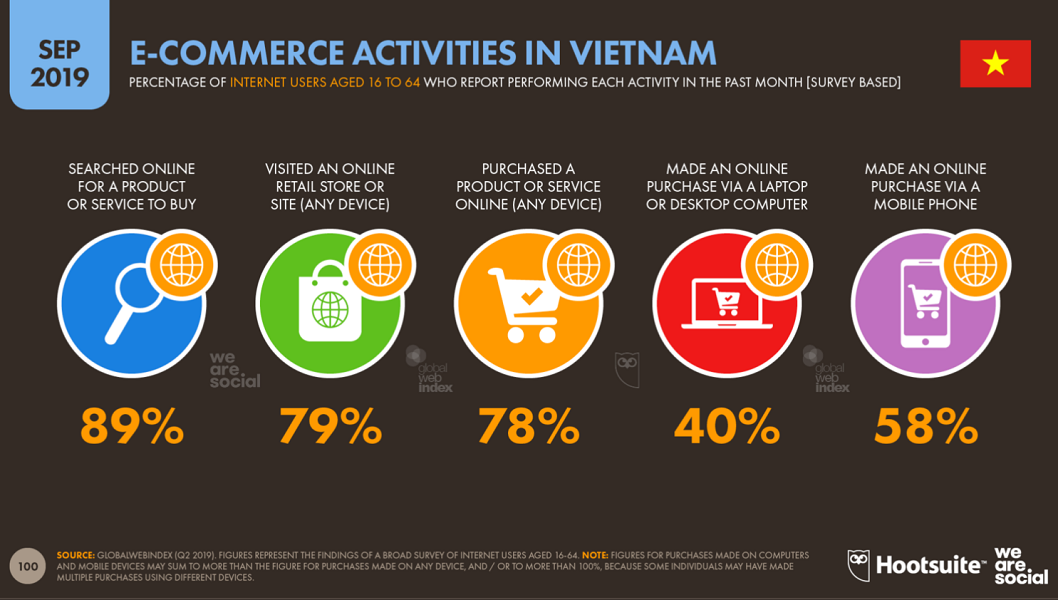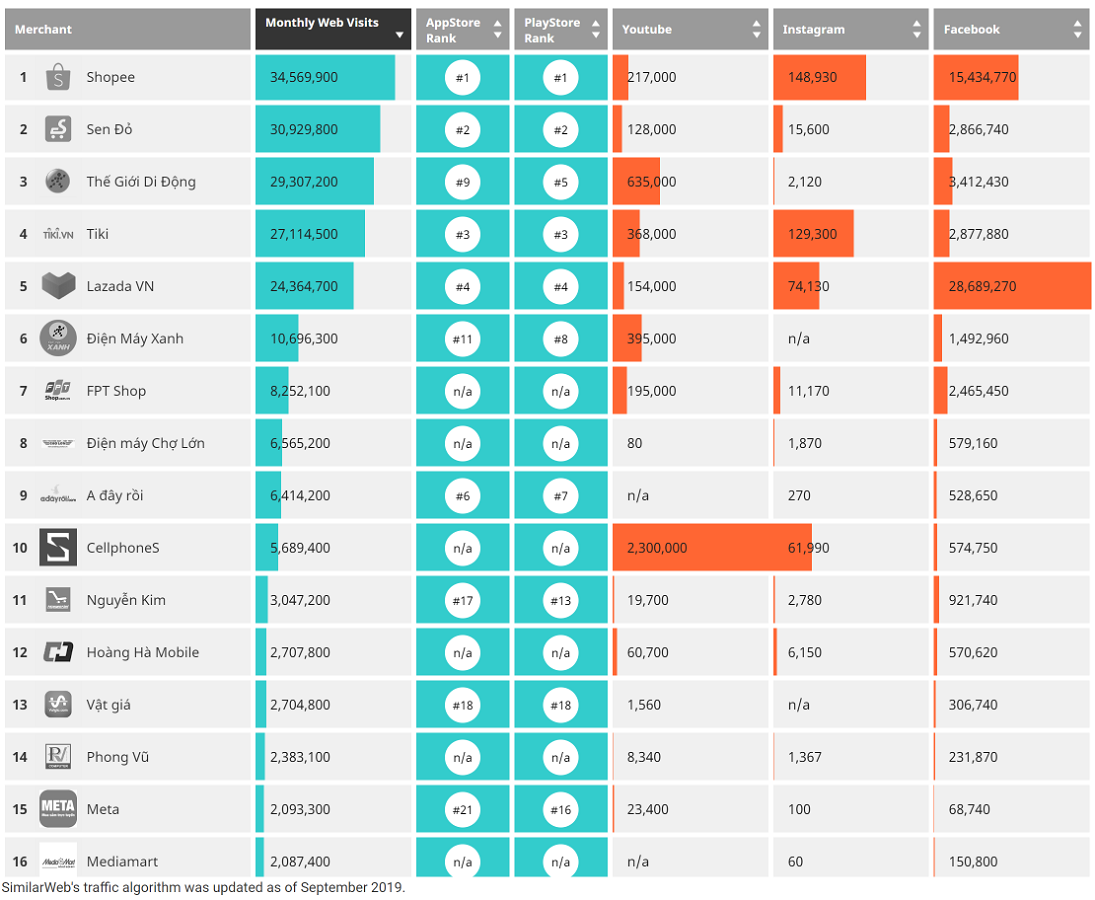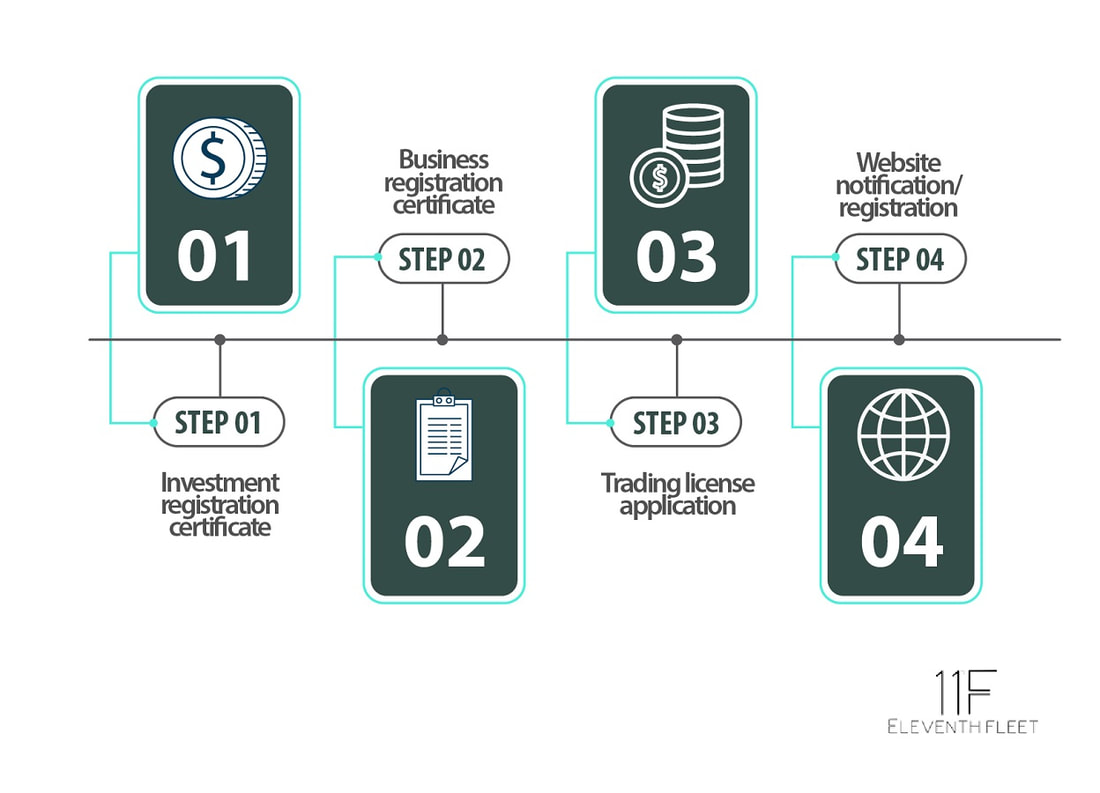E-commerce trends in Vietnam in 2019According to Datareportal’s report (1), as of September 2019, there are 59 million internet users in Vietnam, while GlobalWebIndex reports that 78% of Vietnamese internet users aged between 16 and 64 reported already shop online. Consumers in Vietnam spent roughly US$6 billion on online purchases in 2018, more than US$1 billion higher than the total for the previous year, mainly in 8 categories as follows:
(1) Read the full report here: Leading E-commerce Players in Vietnam marketAccording to the data on iprice, we can see that there is a good mix of local and international e-commerce players amongst the top 10 in Vietnam by visits starting from 2018. After receiving funds, Tiki expanded another impressive vertical with TikiNow (which is a two-hour delivery service), putting a huge impact on revenue. Total visits to the website and application increased dramatically compared to other international e-commerce companies like Shopee and Lazada. The Gioi Di Dong - a retail store chain located across Vietnam, highlighted effective combination between online and offline shopping. It achieved success this year by expanding into high-end watches and acquired almost 18 billion USD in revenue at 18 stores in one month. As of May 2019, The Gioi Di Dong has opened 2.371 stores, reached its 39% revenue and 50% income after tax targets this year. All in all, we can conclude that 2020 is definitely a promising and exciting year for the country’s e-commerce scene. The potential of the e-commerce market in VietnamVietnam could have Southeast Asia's third-largest e-commerce market by 2025. The information was released during the Vietnam online marketing forum in Hanoi on August 14, 2019. The country could possibly only sit behind Indonesia at 100 billion USD and Thailand at 43 billion USD. According to the E-Business Index 2019 report drafted by the Vietnam E-Commerce Association, the scale of Vietnam's e-commerce market in 2018 was 9 billion USD. The report also forecasted that the compound average growth rate (CAGR) of 2015-2018 period was 25 percent and the market would reach 33 billion USD in 2025. In the Association’s e-Business Index survey, about 70 percent of online transactions have been implemented in Hanoi and Ho Chi Minh City, while 20 percent of online transactions have been in other 3 cities (Hai Phong, Da Nang and Can Tho) - with the remaining in other localities and rural areas. However, about 70% of the population is located in rural, mountainous and remote areas and those places are a potential market that businesses need to place investment in the future. Currently, rural or remote area companies lack knowledge about rights and obligations as well as benefits of e-commerce development when participating in the e-commerce market and the internet economy in general. This shows that e-commerce still offers a lot of room for foreign enterprises. How to set up an E-commerce business in VietnamE-commerce regulations in Vietnam The Government has nearly completed a legal system for e-commerce development as well as internet economy to ensure interests and duty of both businesses and consumers when joining the local e-commerce market. In addition, the State agencies have held activities to raise awareness and skills of enterprises when entering the e-commerce market. We can see that the Government’s actions have promoted development of the Internet economy and e-commerce market in recent years. Types of E-commerce in Vietnam
In accordance with Incorporation Law in Vietnam, as a foreign enterprise, keep in mind that each e-commerce type will have a different minimum charter capital, company fee, and specific procedure. What is the minimum charter capital required to set up an E-commerce business in Vietnam? There is no minimum capital requirement; you can plan on an amount that can cover all the expenses. However, the capital you inject must comply with your planned expenses. If investors can prove that they have plenty of experience in e-commerce and can commit to investment in the long term, acceptance by the authorities will be granted much quicker than on average. When joining the e-commerce area, investors must prove a minimum charter capital, clarify payment processes, seller and buyer procedures, import licenses, quality control policies, delivery policies, refund policies, warranty policies etc… In terms of charter capital, from our experience, we suggest that the minimum charter capital is as follows:
E-commerce company establishment steps:
Case study: Our Law firm partner has successfully set up 2 notable online marketplace enterprises: Samsung and Okielah. Should you do a 100% foreign owned e-commerce marketplace in the beginning or is there any better approach? Don’t hesitate to contact us for business and legal advice. Comments are closed.
|
Archives
September 2023
Categories
All
|





 RSS Feed
RSS Feed